10 Quotes about Creating an Authentically Inclusive Classroom
January 9, 2024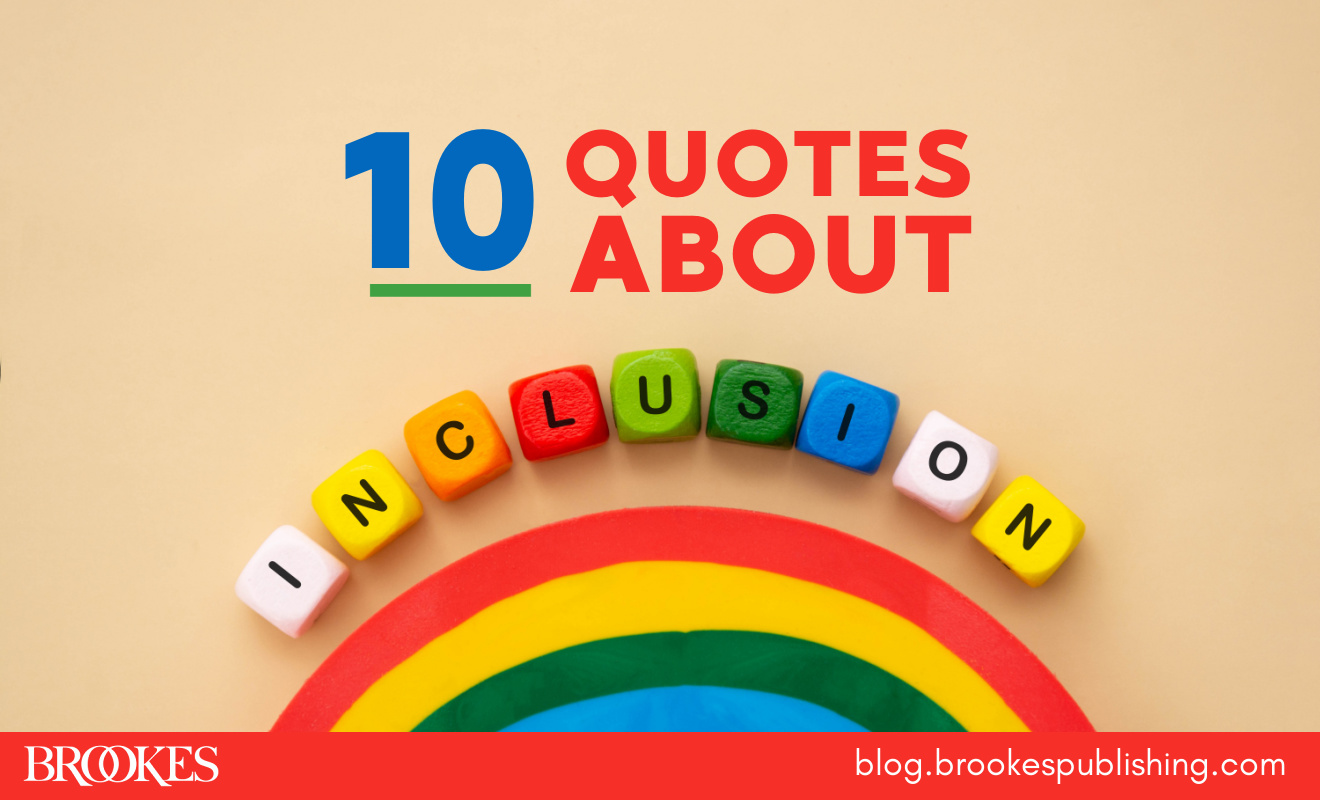
At Brookes, we have the honor of working with some of today’s most trusted and creative minds in inclusive education—Paula Kluth, Julie Causton, Jenna Rufo, Nicole Eredics, and so many more! Today we’re highlighting 10 great, insightful quotes from our authors on establishing authentically inclusive classrooms where every student thrives. (Have a favorite inclusion quote of your own? Add it in the comments!)
Keep expectations high for every student.
 Avoid making predictions or assumptions about a student based solely on the way that student looks, moves, or communicates. Presume competence and keep your expectations high for every student in your classroom. (Quote from Inclusion in Action by Nicole Eredics.)
Avoid making predictions or assumptions about a student based solely on the way that student looks, moves, or communicates. Presume competence and keep your expectations high for every student in your classroom. (Quote from Inclusion in Action by Nicole Eredics.)
Partner with paraprofessionals.
 As this quote suggests, maintaining an authentically inclusive classroom isn’t a job for just one educator. Paraprofessionals play a crucial part in helping teachers plan instruction, develop supports, establish strong communication with the rest of the educational team, and more. (Quote from The Paraprofessional’s Handbook for Effective Support in Inclusive Classrooms, Second Edition, by Julie Causton & Kate MacLeod.)
As this quote suggests, maintaining an authentically inclusive classroom isn’t a job for just one educator. Paraprofessionals play a crucial part in helping teachers plan instruction, develop supports, establish strong communication with the rest of the educational team, and more. (Quote from The Paraprofessional’s Handbook for Effective Support in Inclusive Classrooms, Second Edition, by Julie Causton & Kate MacLeod.)
Focus on strengths, not perceived deficits.
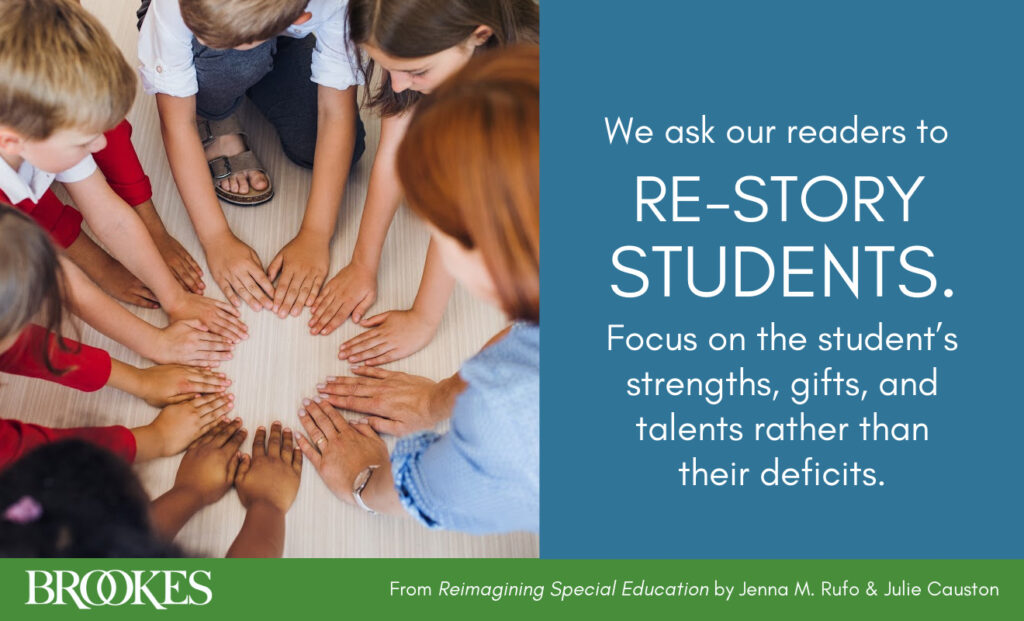 In their visionary guidebook Reimagining Special Education, Jenna Rufo and Julie Causton recommend that educators “re-story” students—tell a new story about them that puts their strengths at the forefront. “When we re-story a child, we focus on their strengths, and then provide an environment and instruction to match those assets,” Rufo and Causton say. “Additionally, we examine our instruction before we assume that a child is typical, gifted, has a disability, and so on.”
In their visionary guidebook Reimagining Special Education, Jenna Rufo and Julie Causton recommend that educators “re-story” students—tell a new story about them that puts their strengths at the forefront. “When we re-story a child, we focus on their strengths, and then provide an environment and instruction to match those assets,” Rufo and Causton say. “Additionally, we examine our instruction before we assume that a child is typical, gifted, has a disability, and so on.”
Explore the benefits of instructional coaching.
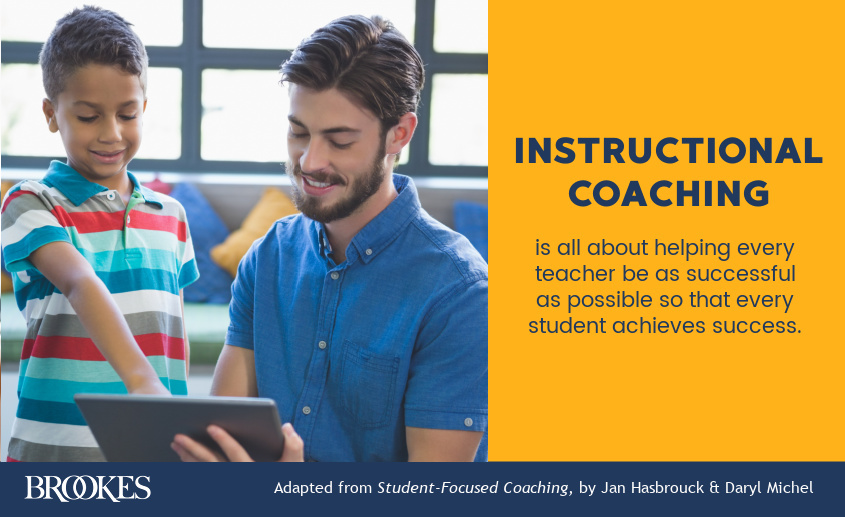 When instructional coaches and teachers work collaboratively to implement evidence-based practices, teachers hone their skills and outcomes for all students improve. (Learn the why and how of Student-Focused Coaching in the popular guidebook by Jan Hasbrouck & Daryl Michel.)
When instructional coaches and teachers work collaboratively to implement evidence-based practices, teachers hone their skills and outcomes for all students improve. (Learn the why and how of Student-Focused Coaching in the popular guidebook by Jan Hasbrouck & Daryl Michel.)
Get started with UDL (if you haven’t already!)
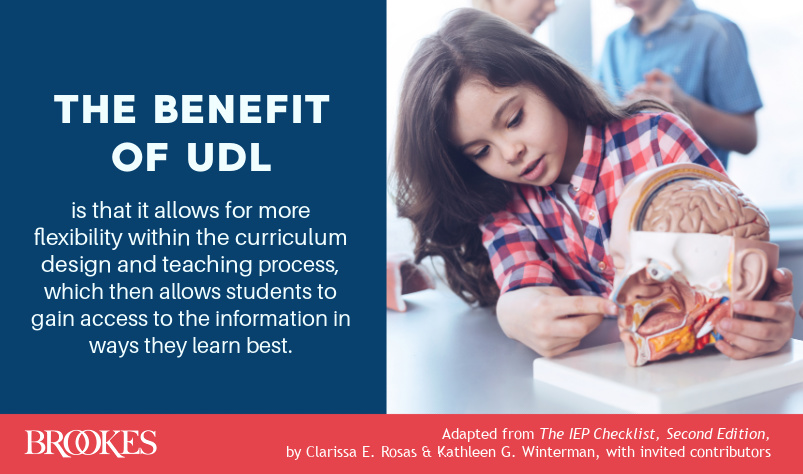 This quote from the second edition of The IEP Checklist (Rosas & Winterman) highlights how universal design for learning makes the curriculum accessible for each student. (To get started, check out our archive of blog posts on UDL, and pick up Design and Deliver, Loui Lord Nelson’s acclaimed UDL primer.)
This quote from the second edition of The IEP Checklist (Rosas & Winterman) highlights how universal design for learning makes the curriculum accessible for each student. (To get started, check out our archive of blog posts on UDL, and pick up Design and Deliver, Loui Lord Nelson’s acclaimed UDL primer.)
Become an advocate for biliteracy.
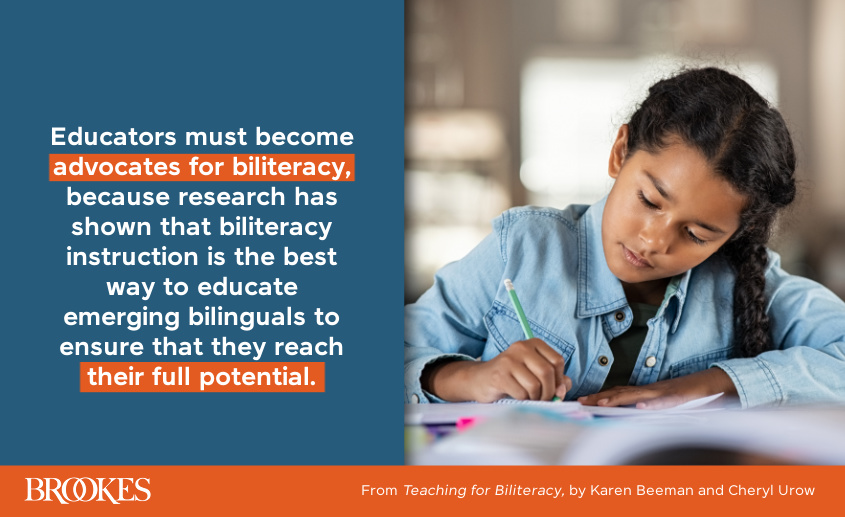 In today’s increasingly diverse classrooms, teachers need to know how best to support bilingual and multilingual learners. As this quote from Teaching for Biliteracy suggests, bilingual students benefit most from instruction that supports their development in both languages. (Explore our full list of titles that help educators teach multilingual learners effectively.)
In today’s increasingly diverse classrooms, teachers need to know how best to support bilingual and multilingual learners. As this quote from Teaching for Biliteracy suggests, bilingual students benefit most from instruction that supports their development in both languages. (Explore our full list of titles that help educators teach multilingual learners effectively.)
Encourage student autonomy.
 In an inclusive classroom, students need more than access to supports—they should be empowered to choose the supports they feel the most comfortable using. (Quote from Equitable and Inclusive IEPs for Students with Complex Support Needs by Andrea L. Ruppar & Jennifer A. Kurth.)
In an inclusive classroom, students need more than access to supports—they should be empowered to choose the supports they feel the most comfortable using. (Quote from Equitable and Inclusive IEPs for Students with Complex Support Needs by Andrea L. Ruppar & Jennifer A. Kurth.)
Use technology strategically.
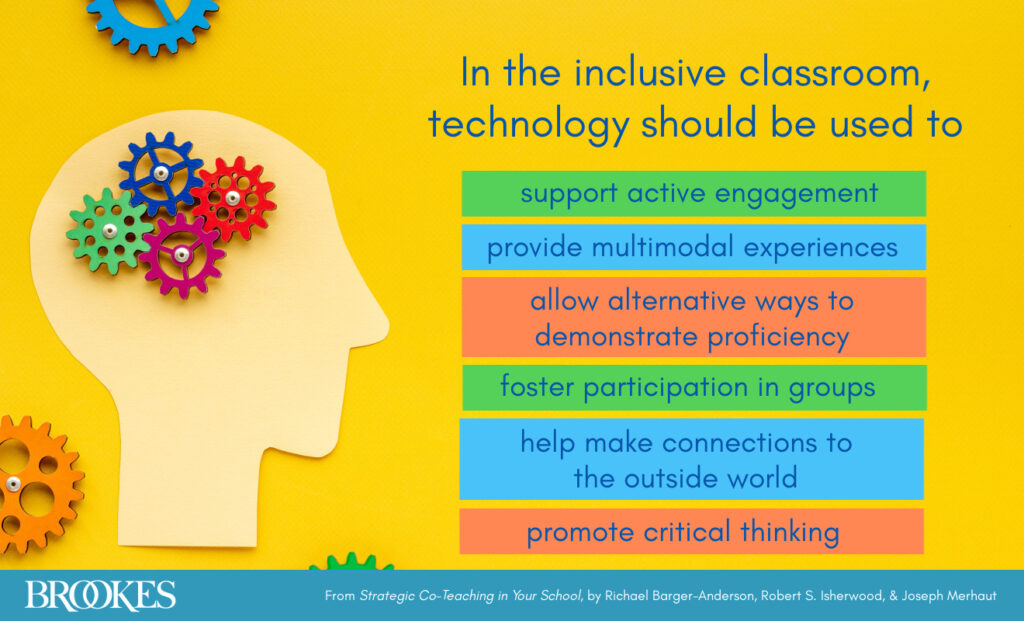 It’s easy to get overwhelmed with all the tech options available to educators. Remind yourself of the “why” behind the technology, and choose options that will help you and your students meet your goals. (Quote from Strategic Co-Teaching in Your School by Richael Barger-Anderson, Robert S. Isherwood, & Joseph Merhaut.)
It’s easy to get overwhelmed with all the tech options available to educators. Remind yourself of the “why” behind the technology, and choose options that will help you and your students meet your goals. (Quote from Strategic Co-Teaching in Your School by Richael Barger-Anderson, Robert S. Isherwood, & Joseph Merhaut.)
Teach for social justice.
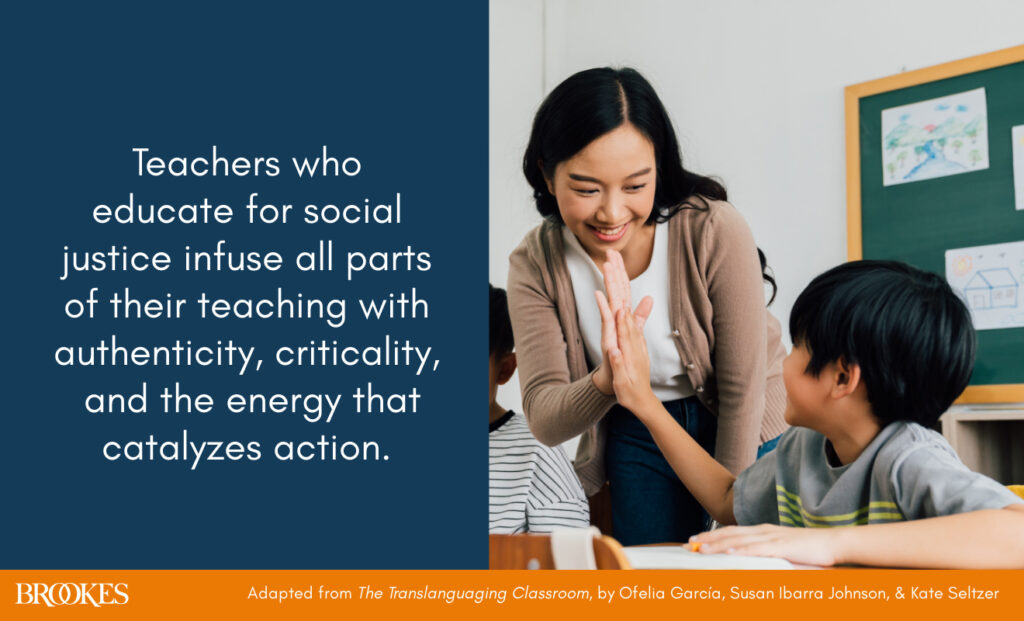 Inclusive educators work with the learners in their classroom to help create a better, more just, and more equitable world. (Quote from The Translanguaging Classroom, by Ofelia García, Susan Ibarra Johnson, & Kate Seltzer.)
Inclusive educators work with the learners in their classroom to help create a better, more just, and more equitable world. (Quote from The Translanguaging Classroom, by Ofelia García, Susan Ibarra Johnson, & Kate Seltzer.)
Celebrate and value differences—don’t just “tolerate.”
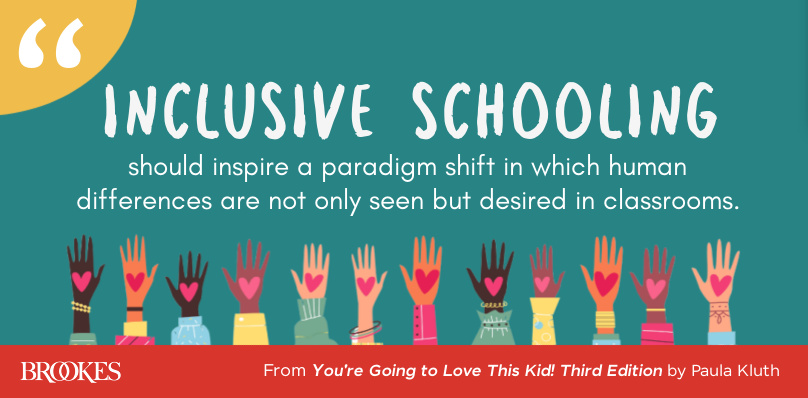 Create a classroom where the differences among your learners are “not only seen but desired” as strengths and assets. (For a teacher-friendly guide to making this paradigm shift happen, invest in the updated third edition of Paula Kluth’s beloved inclusion book, You’re Going to Love This Kid!)
Create a classroom where the differences among your learners are “not only seen but desired” as strengths and assets. (For a teacher-friendly guide to making this paradigm shift happen, invest in the updated third edition of Paula Kluth’s beloved inclusion book, You’re Going to Love This Kid!)
Which quote is your favorite? What book on inclusion do you find endlessly quotable? Tell us in the comments below!




Write a Comment
Your email address will not be published. Required fields are marked *
Post a Comment